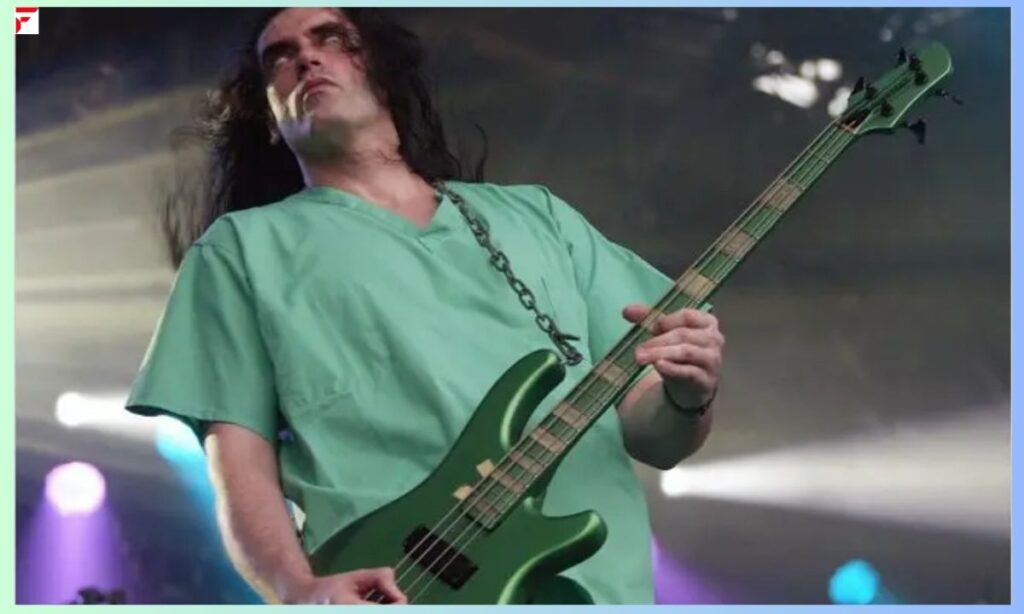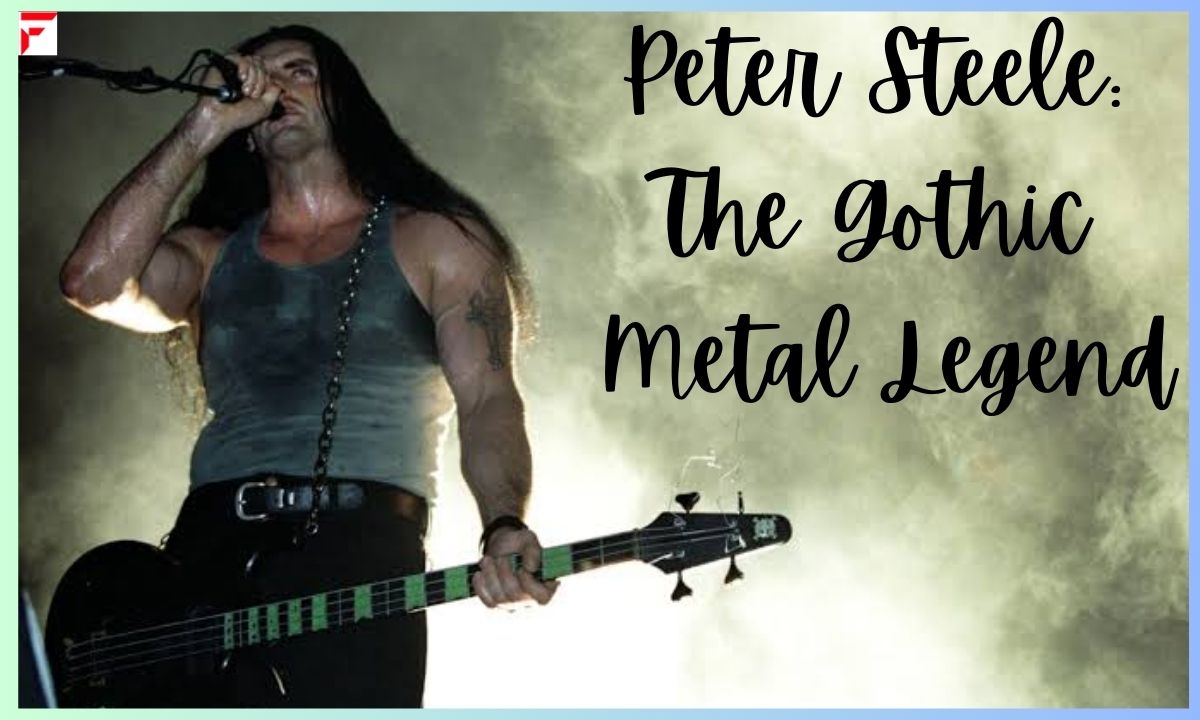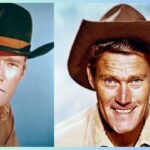Peter Steele, born as Petrus Thomas Ratajczyk on January 4, 1962, was an iconic figure in the gothic metal scene who left an indelible mark on the music industry. The towering frontman of Type O Negative captured audiences with his distinctive bass-baritone voice and commanding stage presence.
The Brooklyn-born musician stood at an impressive 6’7″ (202 cm) and weighed 277 pounds (126 kg), earning him the nickname “The Green Man” during his early days working for the New York City Parks Department. His physical presence, combined with his musical talent, made him one of metal’s most memorable figures.
Peter Steele Bio
| Detail | Information |
| Full Name | Petrus Thomas Ratajczyk |
| Professional Name | Peter Steele |
| Nickname | The Green Man |
| Date of Birth | January 4, 1962 |
| Place of Birth | Brooklyn, New York |
| Date of Death | April 14, 2010 |
| Age at Death | 48 years |
| Nationality | American |
| Religion | Catholic (returned in later life) |
| Profession | Musician, Songwriter, Bassist |
| Famous For | Type O Negative frontman |
Peter Steele Early Life
Born in the Red Hook neighborhood of Brooklyn, Peter Steele came from a Catholic family with rich European heritage. His father was of Polish descent, while his mother had Scottish-Irish ancestry. As the youngest of six children, with five older sisters, Steele developed a unique perspective on life that would later influence his songwriting.
His musical journey began at age 12 when he started taking guitar lessons. Within six months, he switched to bass guitar, despite being naturally left-handed. Due to financial constraints, he learned to play right-handed bass, which became his signature instrument throughout his career.
Steele attended Edward R. Murrow High School in the Midwood neighborhood of Brooklyn. Before his music career took off, he worked for the New York City Department of Parks and Recreation, where he earned his nickname “The Green Man” due to his green uniform and the green garbage truck he drove.
Peter Steele Musical Career
Peter Steele’s musical journey spans over three decades, during which he transformed from a local Brooklyn musician into a gothic metal icon. His deep bass-baritone voice and introspective songwriting style set him apart in the metal scene.
Must Read This Article:John W. Teets: A Legacy of Business Leadership and Educational Excellence
Fallout and Carnivore (1979–1987)
Steele’s first significant musical venture began in 1979 with the formation of Fallout. The band served as his initial platform for developing his musical style and songwriting abilities. After Fallout’s dissolution in 1982, he formed the more aggressive thrash metal band Carnivore.
With Carnivore, Steele explored controversial themes in his lyrics, dealing with religion, war, and social issues. The band released their self-titled debut album in 1985, followed by “Retaliation” in 1987. During this period, he also contributed lyrics to hardcore punk band Agnostic Front’s album “Cause for Alarm.”
Type O Negative

Formation
In 1989, Steele formed what would become his most successful musical venture, Type O Negative. He recruited childhood friends Josh Silver, Kenny Hickey, and Sal Abruscato (later replaced by Johnny Kelly). The band initially used the name “Repulsion,” then “Subzero,” before finally settling on Type O Negative, inspired by a blood donation advertisement.
Slow, Deep and Hard and The Origin of the Feces (1991–1992)
Type O Negative’s debut album, “Slow, Deep and Hard” (1991), showcased Steele’s raw emotional state following a difficult breakup. The album’s lyrics explored themes of heartbreak, revenge, and suicide, drawing from Steele’s personal experiences, including his own suicide attempt in October 1989.
The band’s second release, “The Origin of the Feces” (1992), gained notoriety for its controversial album cover featuring Steele’s anatomy. The album was presented as a live recording but was actually a studio creation with added audience sounds.
Bloody Kisses, October Rust and World Coming Down (1993–2002)
The band’s breakthrough came with “Bloody Kisses” (1993), which achieved Platinum status. This album refined their gothic metal sound and included hits like “Black No.1” and “Christian Woman.” The follow-up, “October Rust” (1996), featured a more melodic approach and included fan favorites like “My Girlfriend’s Girlfriend” and “Love You To Death.”
“World Coming Down” (1999) marked a darker period in Steele’s career, reflecting his struggles with substance abuse and personal losses. Songs like “Everything Dies” and “Everyone I Love is Dead” showcased his most intimate and painful experiences.
Also Read This Blog:Pris Angel Age, Career, Family, Net Worth, Height Bio 2024
Life Is Killing Me and Dead Again (2003–2010)
“Life Is Killing Me” (2003) continued to explore personal themes, with songs dedicated to Steele’s parents and various life experiences. The band’s final album, “Dead Again” (2007), showed a slight return to their earlier heavy sound while maintaining their gothic metal elements.
Further Appearances

Playgirl
In 1995, Steele gained mainstream attention by appearing as a centerfold in Playgirl magazine. The appearance later became a source of amusement for Steele when he discovered that the majority of the magazine’s readership was male, something he hadn’t considered beforehand.
Television and Film
Steele made several television appearances, including spots on “The Jerry Springer Show”, “Ricki Lake”, and “The Howard Stern Show”. He also ventured into acting, appearing in the TV series “Oz” and films like “Dirtbags” (2003) and “Bad Acid” (2005).
Peter Steele Personal Life
Despite his intimidating appearance, Steele was known for his gentle nature and intellectual pursuits. He had a deep interest in science, European culture, and civil engineering. His personal struggles with bipolar disorder and substance abuse often influenced his music, providing raw material for many of Type O Negative’s most powerful songs.
In his later years, Steele returned to his Catholic faith after decades of atheism. He maintained a private life despite his public persona, enjoying simple pleasures like working on his house, caring for his cats, and modifying cars.
Peter Steele Body Appearance Height & Weight

| Feature | Measurement |
| Height | 6’7″ (202 cm) |
| Weight | 277 lbs (126 kg) |
| Eye Color | Green |
| Hair Color | Black |
| Build | Muscular |
The musician’s striking appearance was further enhanced by his long black hair, pale complexion, and green eyes, which perfectly complemented his band’s gothic aesthetic. His vampiric look became a signature part of his image, particularly during Type O Negative’s peak years in the 1990s.
Peter Steele Death and Tributes
Peter Steele passed away on April 14, 2010, at the age of 48 in Scranton, Pennsylvania. Initially reported as heart failure, his death was later confirmed to be caused by sepsis resulting from diverticulitis. His passing marked the end of Type O Negative, as the remaining members decided not to continue without him.
A memorial oak tree was planted in Brooklyn’s Prospect Park in 2011, where fans continue to leave tributes. His legacy lives on through his music and the countless artists he influenced in the gothic metal genre.
Frequently Asked Questions
What was Peter Steele’s real name?
Petrus Thomas Ratajczyk was his birth name, though he was professionally known as Peter Steele.
How tall was Peter Steele?
He stood at an impressive 6’7″ (202 cm), making him one of the tallest figures in metal music.
What caused Peter Steele’s death?
He died from sepsis caused by diverticulitis on April 14, 2010, at age 48.
What was Peter Steele’s most successful band?
Type O Negative was his most successful musical project, achieving platinum status with “Bloody Kisses.”
Did Peter Steele have any children?
No, Peter Steele did not have any children.
Conclusion
Peter Steele’s legacy extends far beyond his physical presence or musical achievements. He was a complex artist who transformed his personal struggles and experiences into powerful music that resonated with millions.
His work with Type O Negative helped define the gothic metal genre, while his personal journey from atheism to faith, and through various personal struggles, showed his human side. Though he left us too soon, his influence continues to inspire new generations of musicians and fans alike.

Brook is a talented content writer and digital marketer with expertise in SEO, social media management, and online marketing. He excels at creating impactful, data-driven content to help businesses connect with their target audience and achieve measurable outcomes.





